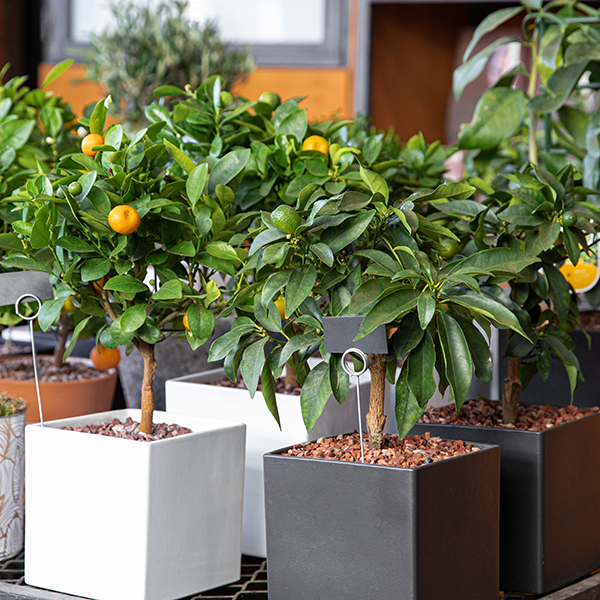
Some of the citrus plants that can be grown inside include, but are not limited to, Ponderosa and Meyer lemons, Key lime and Murcott tangerines. The Meyer lemon is a very popular choice for an indoor houseplant that bears fruit. It produces medium size, sweet lemons with soft, thin skin. The Ponderosa lemon produces fruit a little bit larger than the Meyer lemon and is has a sour taste, more like a true lemon. As far as the Key limes go, they produce small fruits, one to two inches in diameter. They are tarter, juicier and more aromatic than conventional Persian limes. and are The Murcott tangerine is a cross between a tangerine and a sweet orange, generally 2 ½ inches in diameter. All of these citrus plants are beautiful blooming plants that you can grow in your own home with the added advantage of producing edible fruits!
The best way to grow citrus is for your house to maintain a temperature between 65 and 70 degrees during the day and range from 55 to 60 degrees at night. The room should be bright and allow for a few hours of direct light during the day. Make sure that your citrus plant is consistently moist but not soaked. It would be best if you didn’t allow the plant’s soil to dry out fully. Most homes have dry air, especially in the wintertime; you may need to invest in a humidifier to put in the room with your citrus. Avoid rooms with a wood stove if possible. You will want to fertilize your citrus from March through September than discontinue during the winter months.
In the springtime, when temperatures are consistently about 50-55 degrees at night, you can slowly start to adjust them to the outdoors. You can do this over two weeks, gradually increasing the light. This also goes for when you bring them back inside for the winter, gradually decrease sunlight for this period. You also want to make sure to scout for any insects before getting them inside so you do not spread to other houseplants you may have.
Although it can take many months for these types of fruit to produce in the home, it is such an accomplishment to grow your own fruit, especially indoors!
From the Cornell Cooperative Extension
Please call ahead to check on availability:
Weston Nurseries Hopkinton
93 East Main Street
Hopkinton, MA 01748
(508) 435-3414
Weston Nurseries Chelmsford
160 Pine Hill Road
Chelmsford, MA 01824
(978) 349-0055







